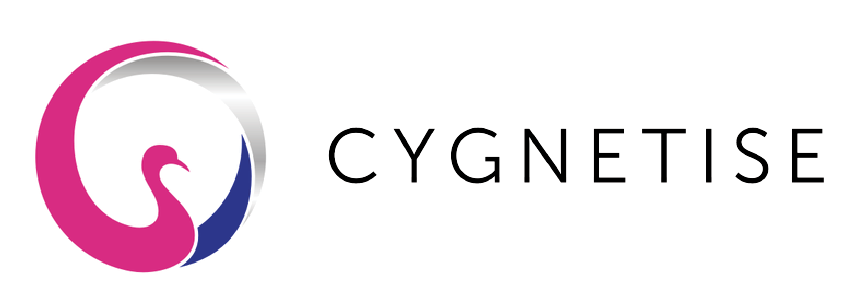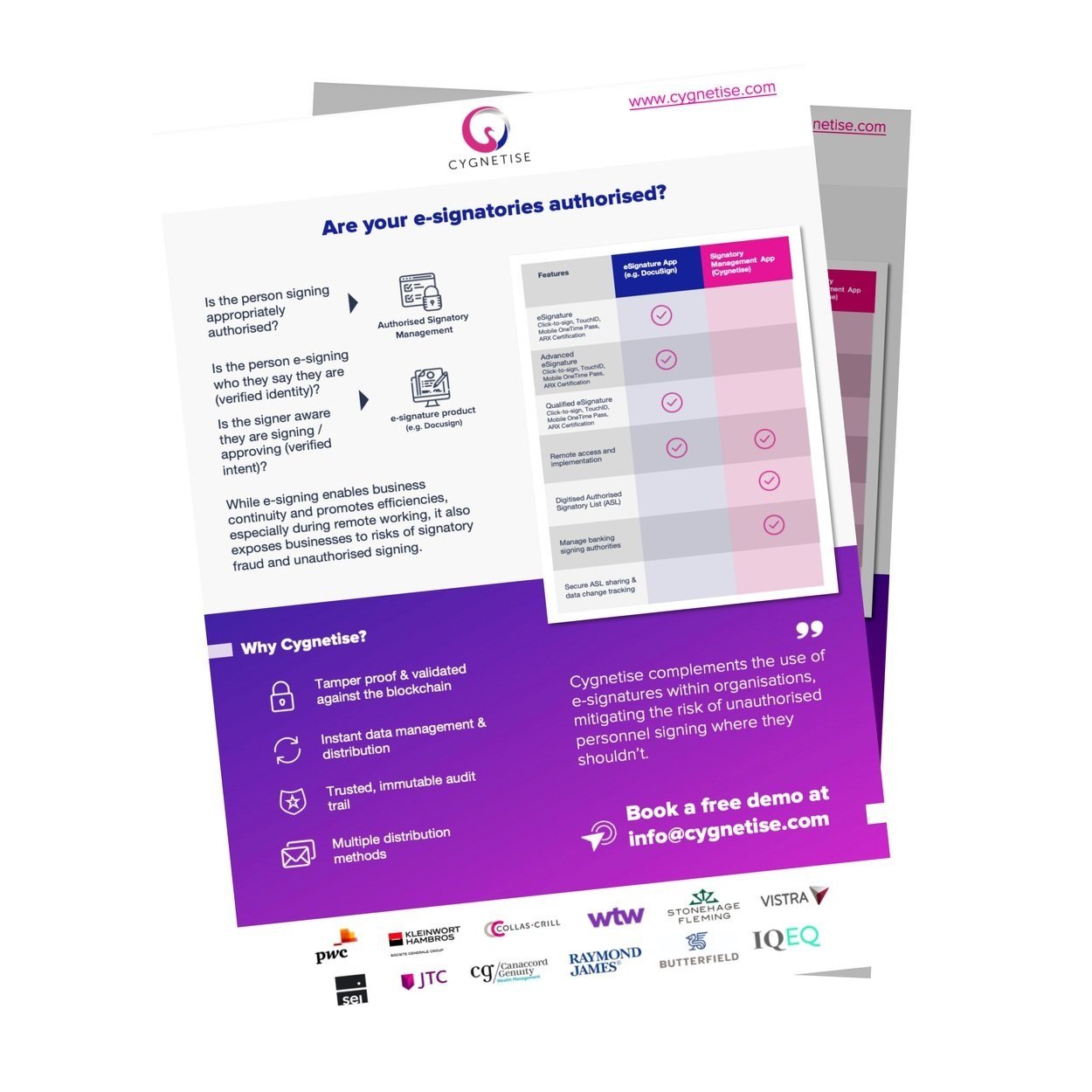3 most common concerns with adopting e-signatures
Are you aware of the risks of using e-signatures? How do you ensure your e-signatories are appropriately authorised? When was the last time you updated your authorised signatories lists? In this blog, we look at the 3 most common concerns with adopting e-signing and best practices for mitigating them.
Following the impacts of COVID-19 and the shift to remote working, many organisations have started to move from using “wet signatures” to adopting electronic signatures. While e-signing enables business continuity and promotes efficiencies, it can also expose organisations to higher risks of signatory fraud, unauthorised signing and non-compliance. However, a comprehensive internal process, accompanied by sophisticated signatory authorisation technology, can significantly reduce the risks and increase the enforceability of signed records.
What is an electronic signature?
According to the US Electronic Communications (ESIGN) Act 2000 and the 2019 Official Report by the UK Law Commission, an electronic signature is a signature in electronic form that is used on a digital document or communication.
Some of the most common types of electronic signatures include:
a name typed at the end of an email,
a scanned copy or photo of a hand-written signature,
a signature made using a dedicated e-signature platform (e.g. DocuSign),
a signature written onto a screen using a stylus.
What are the risks of using electronic signatures?
Generally, digital signatures tend to be more secure than traditional paper-based wet ink signatures as they’re easier to track, especially if generated through a specific digital signature software. Digital signature software products or platforms also use encryption and decryption technology alongside public key infrastructure (PKI) adding an extra step of authentication to the signing process that aims to prevent tampering.
Despite this, there’re still a number of risks organisations should consider when implementing e-signatures:
Risk of fraud & reliability – while using a dedicated digital signatory software platform can help solve any authentication issues of the e-signing process, there’s still a high risk of signatory forging and fraud for organisations as technology can be compromised or hacked. One way to tackle this is by adopting some additional anti-fraud measures such as getting an authentication confirmation via a phone call.
Risk of unauthorised signing – a major problem with both wet ink and electronic signatures is the risk of unauthorised signing. How can organisations ensure that all their signatories (incl. e-signatories) are appropriately authorised? And vice versa, how do signatories know what exactly they are authorised to sign? Blockchain technologies now allow organisations to efficiently and securely manage signatory lists in real-time and have a complete and clear audit trail of all data changes.
Risk of non-compliance – In addition to regional and international electronic signature laws, organisations should also comply with rules and regulations for presenting documents, disclosures, and other information at certain stages during a transaction (e.g. MiFID, FCA). If organisations fail to comply, they face a risk of getting sanctioned and fined by regulatory authorities, losing accreditation status, or damaging their brand equity.
Moving to e-signatures?
Cygnetise complements the use of e-signatures within organisations, mitigating the risk of unauthorised personnel signing where they shouldn’t.
Best practices for implementing electronic signatures
Keep an up-to-date and easily accessible authorised signatory list.
Approve any additional signatories, if required.
Create a formal internal e-signing procedure/policy and consider adding any specific anti-fraud control and compliance measures.
Consider using a cloud-based e-signing platform to facilitate the process and a signatory authorisation platform to add an extra layer of security.
When in doubt, check with legal counsel to verify if using an e-signature is appropriate in your specific transaction.
In summary, e-signatures are undoubtedly a great step forward in efficiency that can further be optimised with the latest advanced signatory management technology.

